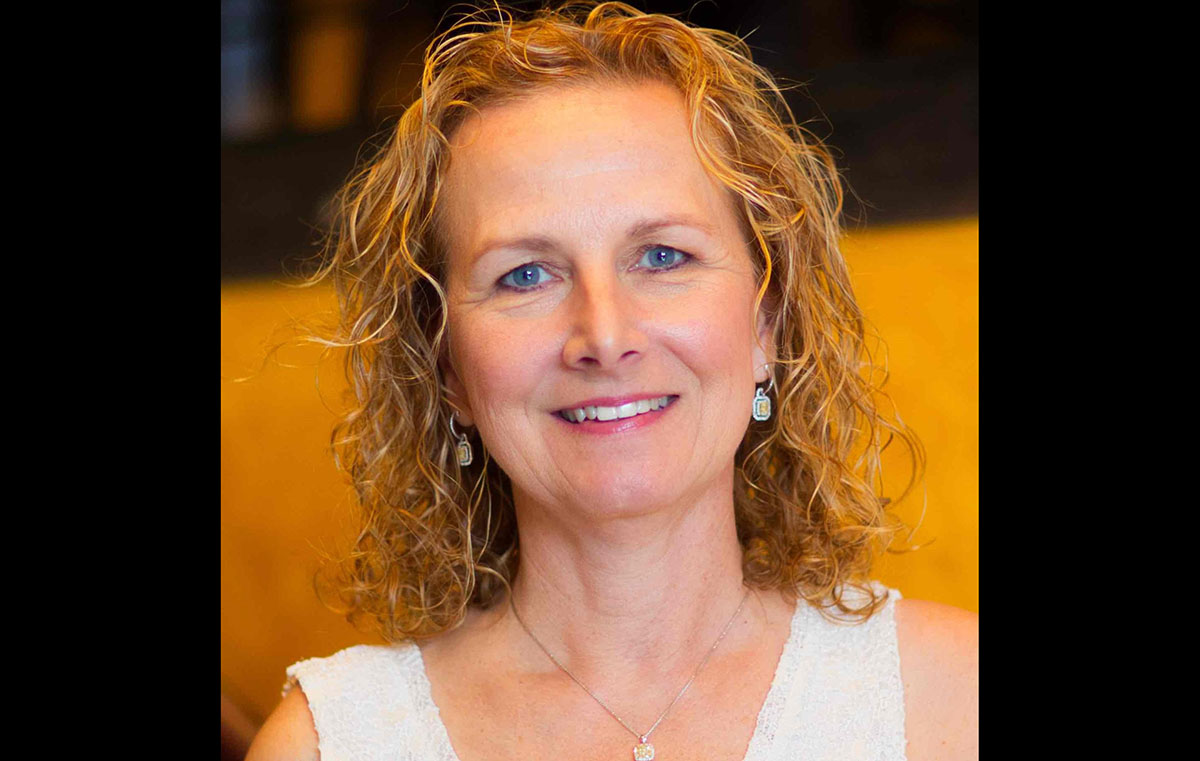Denise Poulos Elser has always believed in using multidisciplinary collaborations to solve important problems. In 2017, she attended an event hosted by Steven Thayer, a Leadership Council member at the Carl R. Woese Institute for Genomic Biology, where she first learned about the IGB and was intrigued by the social and ethical implications of advances in genomic sciences. During her subsequent visit in 2019, she was impressed by the different IGB themes and was inspired to help the research endeavors by making a generous contribution to the Director’s Innovation Fund.

Elser grew up in Chicago knowing that she wanted to become a physician because she was fascinated by the inner workings of the human body. When she started fourth grade, she joined a program that allowed her to pursue any science project she wanted. Unsurprisingly, she studied anatomy. “When I started dissecting animals and seeing how the organs work and how they are connected, I wanted to learn how to put bodies back together. I knew early on I wanted to be a surgeon,” Elser said.
When Elser began looking at universities, she was won over by the program at the University of Illinois Urbana-Champaign. To the dismay of her parents, she ripped up her applications for other universities after her visit. “The University of Illinois had everything I needed to become the best physician I could possibly be,” Elser said. “Many people had discouraged me from joining because the classes were so big. However, I was never lost; I always had mentors and friends who helped me.”
Her favorite memory was the cockroach lab with Fred Delcomyn, a professor of neuroscience and entomology, where she learned about physiology. “The entire class was focused on how electrolytes in the nerves trigger muscle function and it was one of the main labs that was studying nerve damage,” Elser said. “Although it is one of my favorite memories, it was also scary because some of the cockroaches were bigger than my hand.”
After graduating in 1984, Elser returned to Chicago and joined the Rush University Medical Center where she joined the gynecology program. “At first, I thought I would go into general surgery, but a mentor introduced me to gynecological surgery. In those early days of urogynecology, I was attracted to the challenge of improving surgical techniques to reconstruct a woman’s body after childbirth and aging, which causes prolapse and incontinence,” Elser said.
Over the years, Elser has maintained a balancing act between surgery and research, where she studies issues that are often overlooked by surgeons. In 2010, a well-funded national research consortium published a study that led gynecologists to always insert a mesh to prevent incontinence in women undergoing prolapse surgery—a procedure that corrects the condition where one or more organs slip from their normal position and bulge into the vagina. However, the surgeons in the study performed as few as 5 such surgeries per year, while Elser usually performed about five per week. Since she disagreed with the conclusions, she conducted a multi-site study where she looked at whether women need to have surgery that addresses incontinence issues when they undergo prolapse surgery.
“I collected the data from my colleagues and we realized that incontinence surgery was not necessary in every single patient. By analyzing results of urodynamics testing, and only implanting a mesh in women with proven incontinence, the ladies in our study had much better outcomes,” Elser said.
Elser also works on projects that solve surgical problems using engineering techniques. In one of her studies, she collaborated with a mechanical engineer to address stress incontinence, where urine leaks out when patients cough. Traditional treatment involves inserting a mesh to tighten the urethra. The engineer, on the other hand, had a less conventional idea. “He said it was like a high-pressure boiler with a leaky valve; you can’t just keep tightening the valve,” she said. “Instead, he suggested inserting a balloon, which acts as a shock absorber. Now when a woman coughs, the balloon absorbs all the pressure and nothing leaks out.” The procedure is safer, easier, and the invention was recently approved by the FDA.
The same spirit of innovation drew Elser to the IGB labs, where she was particularly impressed with the EIRH theme, which focuses on improving reproductive health. Her donation will help the research groups develop tools to investigate how environmental toxins can impact reproductive health. “I decided to donate because there are so many teams of specialists that get together from different walks of life and they make projects work because they approach them from different angles,” Elser said.
